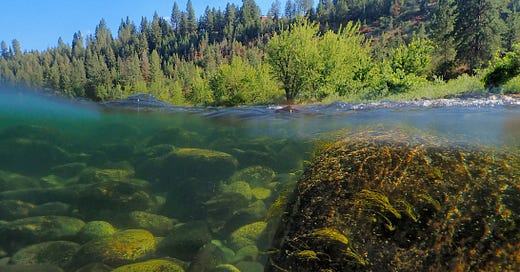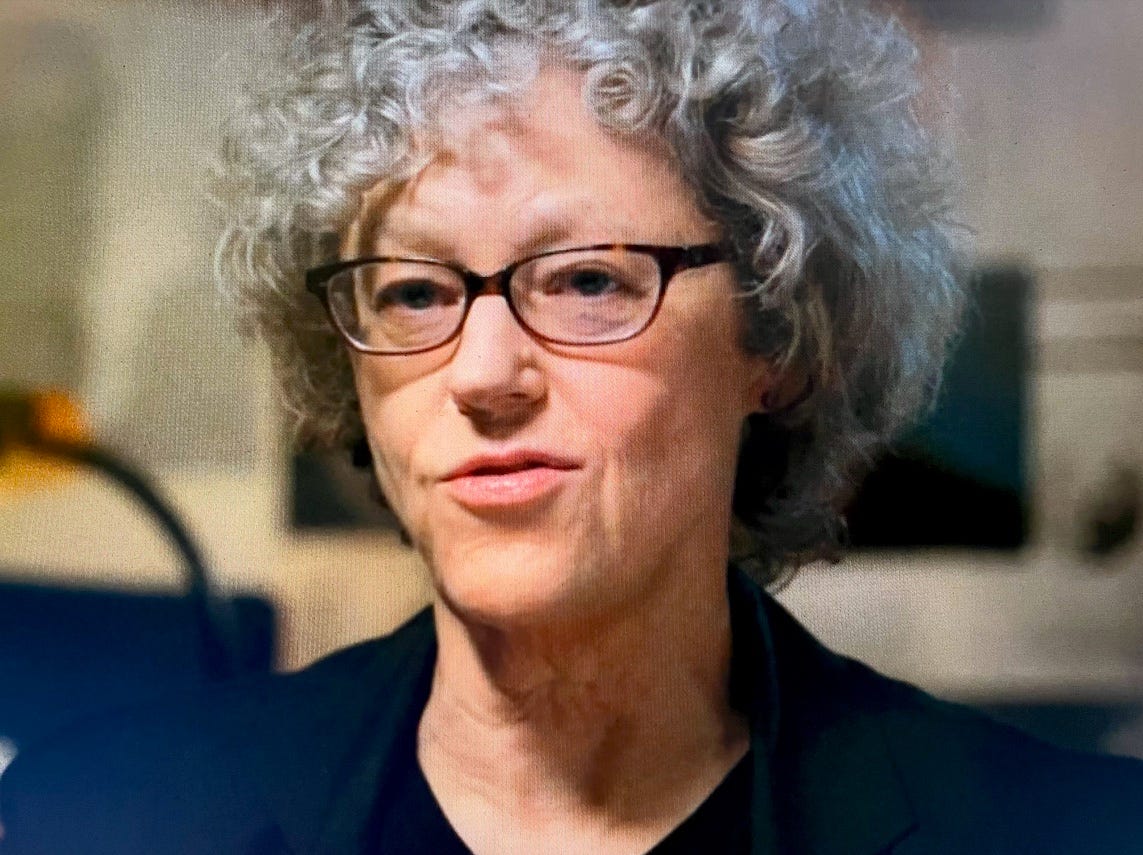“The Liquid Boundary”—the seam between water and sky, Spokane River, west Spokane
UFOs
Part 2: The Reporter
I’ve never met Leslie Kean. I only began to know about her work as a journalist and archivist in the way many thousands of others did—via a stem-winding, 20,000-plus word article by Gideon Lewis-Kraus that the New Yorker published two years ago.
Entitled ‘How the Pentagon Started Taking UFO’s Seriously,’ the ballast of the story was conveyed in the article’s subhead: ‘For decades, flying saucers were a punch line. Then the U.S. government got over the taboo.’
The New Yorker article—for which Leslie Kean was both a profile subject and a guide to a 75-year history of UFO intrigue—was a nifty two-fer.
In the foreground of the story was a remarkable crack or pause in the U.S. government’s decades-long practice of denying and suppressing evidence of UFO encounters. Yet, the story itself was a clear signal that it wasn’t just the military that seemed to have lifted it’s “taboo.” The conspicuous companions in this shift were some of the nation’s most reputable media outlets, including the New Yorker itself with its stable of accomplished writers and legendary fact-checkers. Just two weeks after the New Yorker published, CBS News followed with a dramatic piece for its iconic, prime-time 60 Minutes broadcast.
The New Yorker not only ran Lewis-Kraus’s article, it extended and showcased the story with a broadcast segment of The New Yorker Radio Hour distributed nationally to public radio outlets. The magazine’s prominent editor, David Remnick, hosts the program. This is how he introduced the broadcast version of the story that aired the same day the magazine version appeared:
“If you told me when I took this job that one day I would be publishing a long story about UFOs, I probably would have guessed we were talking about some sort of humor piece by Patty Marx or Ian Frazier. I wouldn't have imagined that we'd be publishing thousands and thousands of words on serious government programs investigating UFOs or quoting officials on the record to the effect that UFOs are a pressing issue of national security. But times change.”—The New Yorker’s David Remnick
As Remnick suggests, it was not that long ago that prominent media gatekeepers were content to leave discussions of UFOs to the science-fiction trade or relegate them to occasional entertainment or humor pieces. As assignments go, it is a disheveled beat attracting all sorts of people and all sorts of stories—from purported UFO sightings to a gamut of seemingly incredulous accounts including alien contact and recovered alien craft. For that reason, alone, it has been easier to regard UFOs as a genre of fiction and humor rather than as a credible subject for inquiry. There is no single reason why that began to change. But to the extent the military and media taboos against taking UFOs seriously began to crack in recent years it is due in no small part to Leslie Kean—not just her journalistic elbow grease but the breadth of her research and reliability as a reporter and guide to the UFO phenomenon.
Leslie Kean on camera in National Geographic’s 2023 documentary series, UFOs: Investigating the Unknown
“My goal has been to take this out of the weird. Maybe it’s partly because I’m not weird myself.” —Leslie Kean, The Guardian, June 2021.
To continue reading, subscribe to The Daily Rhubarb…






